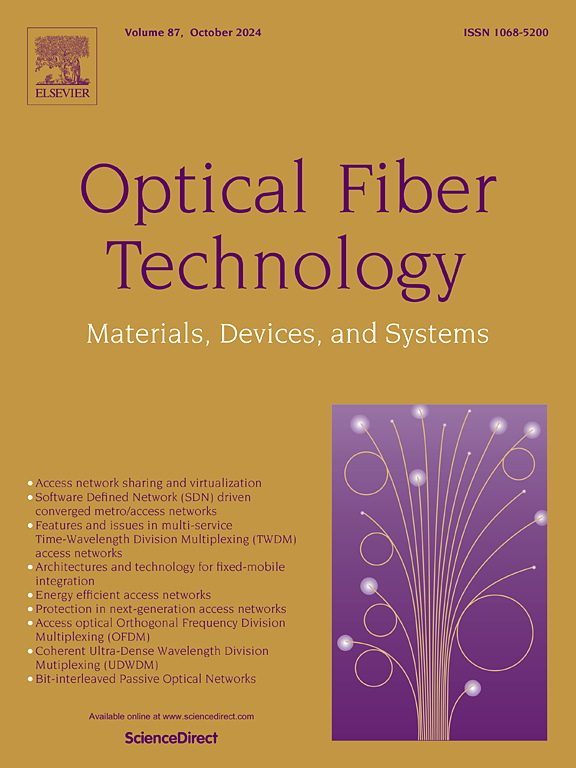Research progress on the application of composite ring cavity filters for 2 μm single-longitudinal-mode narrow-linewidth fiber laser
IF 2.6
3区 计算机科学
Q2 ENGINEERING, ELECTRICAL & ELECTRONIC
引用次数: 0
Abstract
In recent years, the composite ring cavity (CRC) filter plays a crucial role in fiber laser design due to their excellent performance, especially in achieving single-longitudinal-mode (SLM) and narrow-linewidth laser output. The application of CRC filters in 2 μm SLM narrow-linewidth is introduced in this work. The advantages and drawbacks of the CRC filters are analyzed in the process of mode selection when fabricating 2 μm SLM fiber laser. The principles of mode selection, structure design and simulation about the CRC filters are discussed. The CRC filters are classified according to the number of optical couplers (OCs) and sub-ring cavities. Different types of CRC filters currently used are analyzed, and the effects of cavity length, cavity length difference, and coupling ratio on CRC filters parameters, such as transmittance, side-mode suppression ratio (SMSR), effective free spectral range (FSR), and full width at half maxima (FWHM) of the main resonant peak are summarized. Finally, the research works of the CRC filters are summarized and some suggestions for future development of CRC filters are discussed.
求助全文
约1分钟内获得全文
求助全文
来源期刊

Optical Fiber Technology
工程技术-电信学
CiteScore
4.80
自引率
11.10%
发文量
327
审稿时长
63 days
期刊介绍:
Innovations in optical fiber technology are revolutionizing world communications. Newly developed fiber amplifiers allow for direct transmission of high-speed signals over transcontinental distances without the need for electronic regeneration. Optical fibers find new applications in data processing. The impact of fiber materials, devices, and systems on communications in the coming decades will create an abundance of primary literature and the need for up-to-date reviews.
Optical Fiber Technology: Materials, Devices, and Systems is a new cutting-edge journal designed to fill a need in this rapidly evolving field for speedy publication of regular length papers. Both theoretical and experimental papers on fiber materials, devices, and system performance evaluation and measurements are eligible, with emphasis on practical applications.
 求助内容:
求助内容: 应助结果提醒方式:
应助结果提醒方式:


